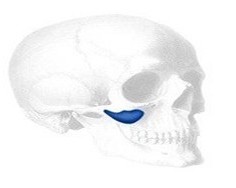Aging affects all areas of the face for which there s no one single surgical procedure that simultaneously corrects all of them. The most known anti-aging surgery is the facelift, and while tremendously effective at improving the neck and jowls, its effects are more limited north of the lower third of the face. The sagging midface can be addressed at the time of the facelift and a wide variety of techniques have been described to do so.

In the April issue of the Aesthetic Surgery Journal an article was published entitled ‘Enhancing Facelift With Simultaneous Submalar Implant Augmentation’. In this paper the authors describe their experience with the submalar implant in facelift surgery over a twenty-five year period in forty-eight (48) patients.They had a satisfaction rate of 96%. Complications consisted of temporary infraorbital nerve numbness (2%), prolonged swelling (1%) and capsular contracture. (1%) No infections or implant removals were required.

What is more surprising is that in nearly fifty patients no infections or implant mapositions occurred given that the number of implants placed being close to one hundred. For an intraoral implant procedure, this indicates a high skill level in placing them.
Dr. Barry Eppley
Indianapolis, Indiana



